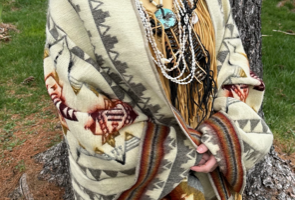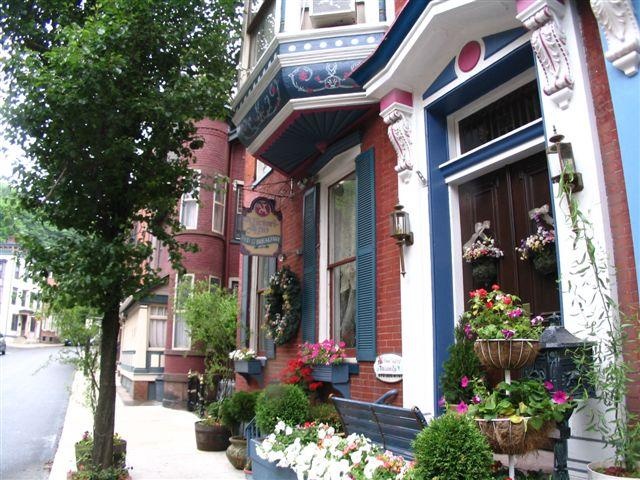By Yvonne Wright • The Current Contributing Writer
Ancient cultures are imbued with artistic depictions of stories and myths about love, often played out in the realm of the supernatural and mystical. Whether immortalized in poems, carved in stones as architectural embellishments, etched in clay pottery, or depicted in paintings, human enjoyment of celebrating, and in some way, emotionally re-living the legends of lovers whose tragic circumstances wouldn’t allow them to be together, crosses the boundaries of time and civilizations, inspiring generations of romantics across millennia, right into our modern times.
Being in love is a state of existence that envelopes a wide range of meanings and expectations, best expressed in action; hence, how one feels about someone is most evident in what one does to make that person feel special, adored and desired – a conundrum if not reciprocated…
It is not unusual, but perhaps unconventional today, to refer to a handsome young man as an Adonis. Originating in Greek mythology, it is a well meant complement that refers to a young man of strikingly fine features, rippling muscles, and a hint of overconfidence. Made popular throughout the Hellenic world, the story of Adonis (the eternally youthful god of beauty and desire) and his relationship with Aphrodite (the goddess of love and beauty), had its roots in the ancient civilization of Phoenicia, later appropriated with minor differences by the Egyptians, Greeks and Romans, as a universal story of lust and jealousy, and the struggle between love and death.
Adonis is the archetype of a handsome youth, born to the equally beautiful Myrrha, daughter of King Cinyras of Cyprus. It was King Cinyras, who inadvertently angered the extremely vain and self-absorbed Aphrodite, by often boasting to his friends how beautiful his daughter was, and going so far as to claim that Myrrha was more beautiful than Aphrodite herself! Well, if one has learned anything from Greek plays and mythological legends it is that the gods residing atop Mount Olympus were an extremely jealous supernatural bunch, quick to anger, and delighting in punishing those who crossed them.
Resentful Aphrodite (known to Romans as Venus), would not allow her title as the most beautiful, to be questioned by anyone, especially mortals. After all, she was the daughter of Zeus (Roman Jupiter), the king of all the gods and goddesses of the Olympian pantheon. Therefore, she convinced her son Eros (god of physical desire, aka Cupid) to help her carry out a devious plan of revenge. By shooting an arrow through Myrrha’s heart, Eros made her fall desperately in love with her own father, impelled by insatiable lust. In the classical world, “erotic attraction was generally referred to as a kind of madness, or theia mania (madness from the gods)” and was explained with the elaborate metaphor of one’s heart being pierced with “love’s arrow” or “Eros’ dart.”
As the spell took hold, a disguised Myrrha tricked her father into consummating the union, but the king was outraged and threatened to kill her upon realizing the betrayal. To save herself and the baby she was now carrying, Myrrha pleaded with the gods to change her appearance into something other than human, which they granted, and she was transformed into a myrrh tree. Incredibly, nine months later the tree simply split open and a baby boy was born.
Watching the events of Adonis’s birth, a now remorseful Aphrodite became charmed by the mortal boy’s natural beauty and became devoted to him. Wanting to keep the baby safe, she entrusted the queen of the Underworld, Persephone, with raising the boy. However, as the young Adonis grew older and became progressively more attractive, the queen couldn’t help but to fall madly in love with the handsome youth, and when the day came for Adonis to return back to Aphrodite, Persephone refused to let him go.
Zeus had to intervene in the squabble, and it was decided that Adonis would spend four months of the year with Persephone who raised him, four months with Aphrodite who adored him, and the remaining four months with whomever he wished. Adonis chose Aphrodite, revealing for the first time his heart’s true desire. In Greek mythology, the myth of beautiful Adonis is always intertwined with his eternal love for the alluring Aphrodite. While the two lovers were together, the sun shone brightly upon the land, the soil was kind to the people, flowers bloomed and fruits ripened.
Arguably, one may suppose that the eternally youthful and immortal goddess of love, Aphrodite, could be in fact hundreds of years older than Adonis, but in the ancient mythologies age didn’t matter, and their love story wouldn’t be complete without mentioning the circumstances which brought them together. In many ways, Adonis’ handsome looks were his curse and undoing, because they triggered a rage of strong emotions, from love and adoration to jealousy and resentment, in those who met him. Described as androgynous, he was said to be also loved by other gods like Apollo, Heracles and Dionysus.
Renowned for his hunting skills, Adonis enjoyed, more than anything, the sport of seeking, pursuing and capturing animals, and the kinship with wildlife it provided – in spite of Aphrodite’s constant pleading to stop the dangerous fun (because she couldn’t bear the thought of losing him in a tragic accident). A particularly prudent worry, when one considers the ancient practice of hunting a challenge of strength and fitness for hunters equipped only with long spears or bows.
On one such hunting adventure in the Afqa forest near the city of Byblos, Adonis was badly hurt by a wild boar and bled to death from his injuries in the arms of Aphrodite, who tried to save him by administering a magical nectar into his wounds, to no avail. As his blood blended with the nectar and poured into the soil, beautiful flowers sprang up from the ground. It is believed that the scent of Anemone flowers matches the aroma of Aphrodite’s nectar, and their color Adonis’s blood. When some of his spilled blood reached the nearby river, its water also turned red. Even today, the phenomenon of the Abraham River (also known as the Adonis River) in the Keserwan-Jbeil Governorate of Lebanon flowing red continues. Each February, “due to the volume of soil washed off the mountains by the heavy rains,” the beautifully meandering river appears as if filled with blood.
In one version of the story, Artemis (worshiped by Romans as Diana), the goddess of wild animals, the hunt, vegetation and chastity, is accused of plotting to kill Adonis by sending a wild boar to attack him, because she became jealous of Adonis’s skills as a huntsman, surpassing hers.
In another version, it was Ares (aka Mars), the handsome god of war and Aphrodite’s one time lover, who became jealous of her infatuation with the mortal, and to eliminate competition he transformed himself into a wild boar and attacked Adonis.
In response to his daughter’s inconsolable laments, Zeus stepped in once again and determined that Adonis should only spend half of each year in the land of the dead, thereby creating a cycle of Adonis’ death and resurrection as representative of the decay and revival of plant life, reflecting the agricultural seasons of early Mediterranean civilizations. Adonis became worshipped as a god of grain crops and perpetual renewal, fertility, and beauty – a male counterpart for Aphrodite – whose love story contains elements of tragedy and happiness. The late nineteenth-century Scottish anthropologist, Sir James George Frazer, claimed that Adonis was just one example of the archetype of a “dying-and-rising god” found throughout all cultures.
The myth of Adonis has been a source of great inspiration for many poets, painters, sculptors and historians, leading to its widespread use as a major theme in literary and intellectual productions. One of the most influential works in Western culture is Shakespeare’s erotic narrative poem Venus and Adonis (1593) which retells the courtship of Venus (Aphrodite) and Adonis, as originally described by the Roman poet Ovid in Metamorphoses, Book X. Venus’s desperate love for Adonis has become an inspiration for many literary portrayals of courtships in Elizabethan literature, and the most popular story of all Shakespeare’s works published within his lifetime.
This highly decorative, art deco style color lithograph “Adonis and Aphrodite” by the French illustrator, Georges Barbier (1882-1932), narrates the pivotal moment of Adonis’ embarking on his last hunting trip, bow in hand. Worried Aphrodite begs him stay and abandon his plans, but her plea is to no avail, as Adonis loves hunting almost as much as her. The call of the wild beckons him, and his destiny quickens its arrival…
Eternal Love! A powerful feeling too difficult to describe but one that creates an unbreakable bond of unwavering devotion between two soulmates destined for each other. Once broken, it inflicts a deep wound into the heart that never heals. And yet, only very few are lucky enough to experience it…
Yvonne Wright is the owner of STUDIO YNW at 100 West Broadway in Jim Thorpe. She can be reached at studio.ynw@gmail.com



























Add Comment